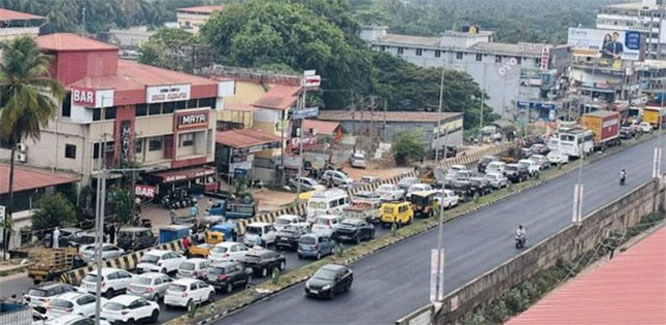
Mangalore, March 11: A plan to extend the Mangalore airport's tabletop runway, which witnessed the decade's worst plane crash in India, remains stuck 10 months after it was announced as both the airports regulator and the Karnataka government are reluctant to bear the expense.
In May, an Air India Boeing 737-800 flying in from Dubai overshot the airfield and crashed into an adjacent hill, killing 158 passengers and crew. The airport is on top of a hill with deep gorges on all sides of the runway, which gives the airfield its prefix.
Immediately after the crash, the aviation ministry said the runway would be extended by 1,000m, or about 3,280ft, to make it safe to land wide body aircraft used in long-haul international flights.
Mangalore is not a designated international airport but was cleared five years ago to handle flights to and from Dubai. The coastal city caters to a large population of passengers from within and neighbouring areas, including Kerala, who work in West Asia.
“We have sent the proposal (to the regulator and the state government). The plan is still at a concept stage,” said Mangalore airport director M.R. Vasudeva. “No physical designs are drawn.”
The tabletop runway at Mangalore airport measures about 9,400ft, long enough to accommodate aircraft such as Airbus A310 but inadequate to handle larger planes.
The International Civil Aviation Organization (ICAO), a global monitoring body for the industry, stipulates the airfield length required to handle widebody aircraft such as the Boeing 747 at 12,000ft.
“Even the Boeing 737s land with a lesser load on plane as it is not possible to carry full load for a safe landing,” said an airport official at Mangalore airport, who declined to be named.
An official with the Airports Authority of India (AAI) said it is already investing at least Rs.6,000 crore in 35 airports to upgrade facilities and is not ready to put money into expanding the Mangalore airfield.
“We are investing in airports of Chennai, Kolkata, the North-East and other regions,” the official said. “Hence, there is a shortage of funds.”
A Karnataka government official, also declining to be named, said the state does not plan to invest in the project. “There is no direct revenue benefit from the airport to the state.”
A probe into the fatal crash by the directorate general of civil aviation, India's regulator for the sector, blamed the tragedy on pilot error, exonerating the tabletop runway that was being blamed by some experts.
Mangalore deputy commissioner Subodh Yadav said discussions on expanding the runway were on but the airport has not sent a written proposal for extending the runway.
“Even if the work begins, the project needs huge investment. For instance, filling the valley requires Rs.300-400 crore,” he said.
India has two other tabletop airfields—at Kozhikode and Shimla. The runway at Kozhikode was extended from 6,138ft to 9,438ft in 2007. The airfield at Shimla measures 3,959ft.
Vasudeva said the Mangalore airport sent a proposal to both AAI and the state government in July to extend the airfield by 1,000m to the south.
AAI had rejected an earlier proposal sent on March 2010, before the crash, to extend the runway by 500m on both ends, saying the plan was not feasible as it would require extensive evacuation.
According to the second proposal, about 5,000 people living near the airport would have to be evacuated. It has estimated that acquiring the land and compensating the people alone would cost Rs.200 crore. A total estimate for the entire project as proposed was not available.
Passenger traffic at Mangalore airport has steadily grown over the years. It handled at least 800,000 passengers in 2010 compared with 263,000 in 2004, according to an AAI report on passenger movement, mainly due to operations between Dubai and Mangalore that began in 2006.
“AAI should have taken at least some measures to avoid a repeat of (the) crash incident even if the runway cannot be extended at the moment,” said Mohan Ranganathan, a Chennai-based aviation expert.
He suggested that AAI at least increase the runway-end safety area (RESA)—a buffer area to protect aircraft—from 90m to 240m and install an engineered materials arresting system.
The system is a mixture of light-weight concrete at the end of the runway so an aircraft can sink safely even if it overshoots the field, though the plane would need repairs later. “At least it wouldn't go down,” Ranganathan said.







Comments
Add new comment